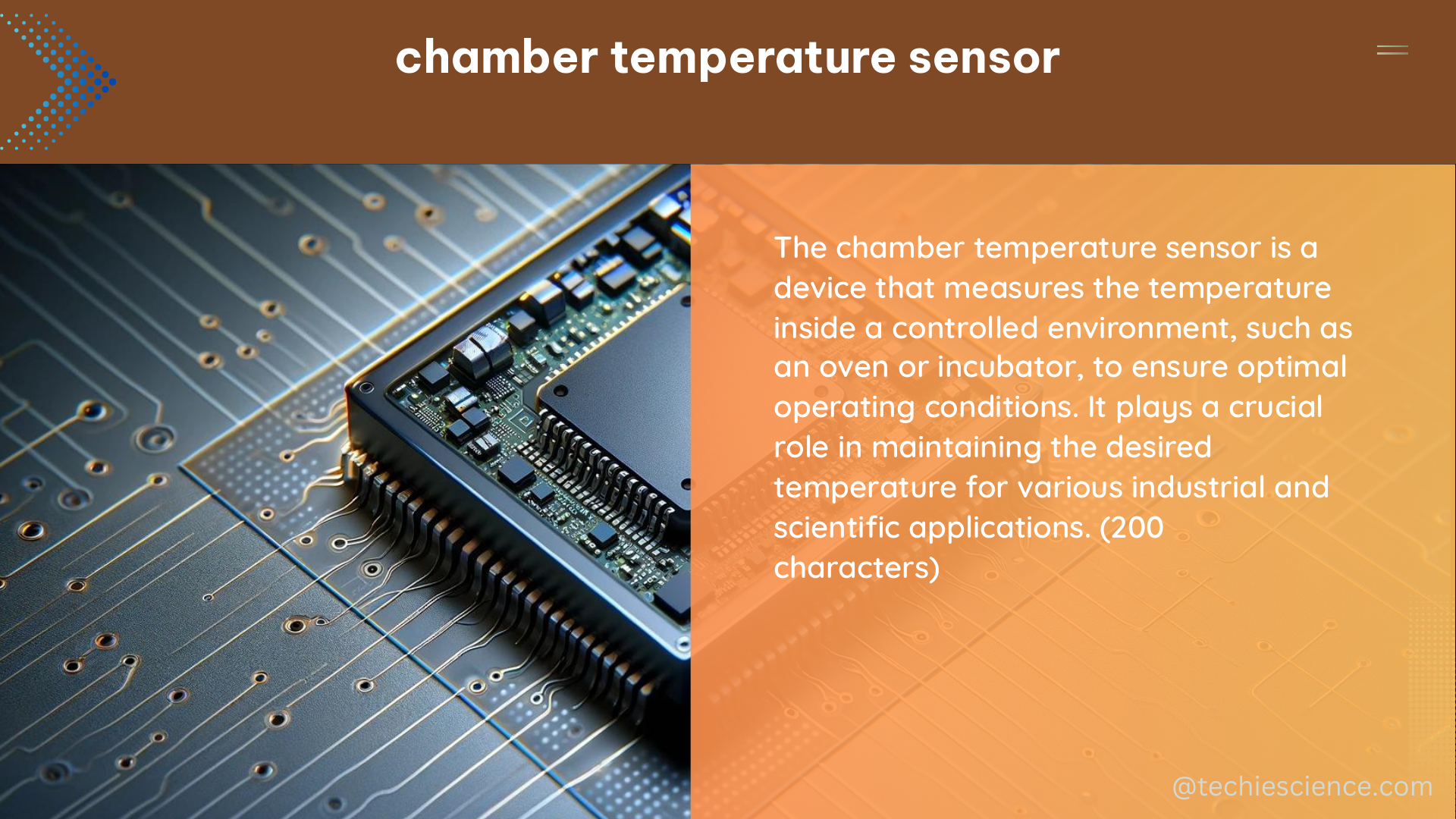The chamber temperature sensor is a critical component in various applications, including 3D printing, robotics, and industrial processes. This sensor measures the temperature within the chamber and relays the data to the controller, which then adjusts the heating or cooling systems accordingly. The sensor’s accuracy, response time, and sensitivity are essential factors that determine its performance and ensure precise temperature control.
Understanding Sensor Sensitivity
The sensitivity of a temperature sensor is a measure of how much the resistance of the sensor changes with temperature. It is calculated using the formula:
S = (Rmax – Rmin) / (Tmax – Tmin)
Where:
– S is the sensitivity of the sensor
– Rmax and Rmin are the maximum and minimum resistances of the sensor
– Tmax and Tmin are the maximum and minimum temperatures of the sensor
The sensitivity of the rGO-based sensor is 2.869% (kΩ °C-1), while that of the MWCNT-based sensor is 0.064% (kΩ °C-1). These values indicate the degree of resistance change per degree Celsius, which is crucial for accurate temperature measurement.
Ensuring Sensor Accuracy

The accuracy of the temperature sensor is another critical factor. The calibration procedures and instrumental accuracy estimates of the sensors measuring air temperature and relative humidity are discussed in various studies. The calibration coefficients are computed using a linear least-square fit to the five mean sensor voltages and chamber humidities. The calibration residuals are then computed and displayed, and any residual exceeding 1.0 %RH is considered unacceptable.
To maintain sensor accuracy, regular calibration is essential. This process involves comparing the sensor’s readings to a known, accurate reference standard and adjusting the sensor’s output accordingly. Proper calibration ensures that the sensor’s measurements are within the desired tolerance range, typically within ±0.5°C or less.
Sensor Configuration in 3D Printing
In the context of 3D printing, the chamber temperature sensor is typically a thermistor, such as the ATC Semitec 104NT-4-R025H42G sensor used in the stealthburner. The sensor’s configuration, including the sensor type, sensor pin, minimum and maximum temperatures, and gcode_id, is crucial for accurate temperature measurement.
Table 1: Typical Chamber Temperature Sensor Configuration in 3D Printing
| Parameter | Value |
|---|---|
| Sensor Type | Thermistor |
| Sensor Pin | PC7 |
| Minimum Temperature | 0°C |
| Maximum Temperature | 100°C |
| Gcode_ID | T1 |
Any discrepancy between the code looking for the chamber temperature and the sensor’s configuration can result in error messages and printing failures. It is essential to ensure that the sensor’s configuration matches the firmware’s expectations to maintain reliable temperature control.
Sensor Response Time and Thermal Inertia
The response time of a temperature sensor is the time it takes for the sensor to reach a certain percentage of its final value when subjected to a step change in temperature. This parameter is crucial in applications where rapid temperature changes occur, such as in 3D printing or industrial processes.
The thermal inertia of the sensor also plays a role in its response time. Thermal inertia is a measure of the sensor’s resistance to temperature changes, and it is influenced by the sensor’s mass, specific heat capacity, and thermal conductivity. Sensors with lower thermal inertia will have a faster response time, allowing for more accurate and responsive temperature control.
Sensor Placement and Insulation
The placement of the chamber temperature sensor within the chamber is also an important consideration. The sensor should be positioned in a location that accurately represents the overall chamber temperature, avoiding areas with localized hot or cold spots. Proper insulation of the sensor and its wiring can also help to minimize the impact of external temperature fluctuations and improve the sensor’s accuracy.
Sensor Redundancy and Fault Tolerance
In critical applications, it may be beneficial to implement sensor redundancy, where multiple temperature sensors are used to monitor the chamber temperature. This approach provides a backup in case of sensor failure and can also help to identify and compensate for any sensor drift or calibration issues over time.
Additionally, the system should be designed with fault tolerance in mind, ensuring that the failure of a single sensor does not result in a complete system failure. This may involve incorporating sensor validation algorithms, automatic sensor switching, or other redundancy measures to maintain reliable temperature control.
Conclusion
The chamber temperature sensor is a crucial component in various applications, and its accuracy, response time, and sensitivity are essential factors that determine its performance. Proper calibration, configuration, and circuit design are crucial for accurate temperature measurement and control.
By understanding the technical details and best practices surrounding chamber temperature sensors, you can ensure reliable and precise temperature control in your 3D printing, robotics, or industrial applications. This comprehensive guide has provided you with the knowledge and tools to master the intricacies of chamber temperature sensor technology.
References:
– An Algorithm for Sensor Data Uncertainty Quantification
– Unknown Sensor Temperature Sensor Chamber
– Highly Sensitive and Stable Reduced Graphene Oxide-Based Temperature Sensor for Wearable Applications
– Calibration and Instrumental Accuracy Estimates of Sensors Measuring Air Temperature and Relative Humidity
– Temperature Measurement

The lambdageeks.com Core SME Team is a group of experienced subject matter experts from diverse scientific and technical fields including Physics, Chemistry, Technology,Electronics & Electrical Engineering, Automotive, Mechanical Engineering. Our team collaborates to create high-quality, well-researched articles on a wide range of science and technology topics for the lambdageeks.com website.
All Our Senior SME are having more than 7 Years of experience in the respective fields . They are either Working Industry Professionals or assocaited With different Universities. Refer Our Authors Page to get to know About our Core SMEs.